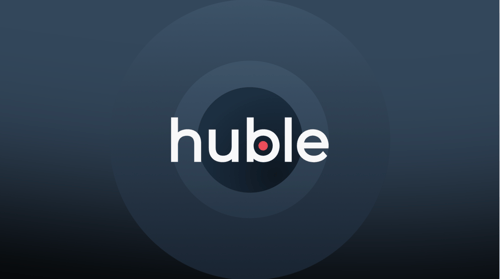In this blog, Matthew Creswick, Group Marketing Director at Huble Digital, highlights five ways businesses are destroying trust via their websites (and thus losing sales) and how to rectify these problems.
With the amount of channels, competitors and content ‘noise’ online, companies have to work harder than ever to build trust with potential prospects – and it’s mostly done via their website.
Earlier in September, I was in Boston for my fifth #INBOUND conference. And though it was my fifth rodeo, it was just as insightful and thought-provoking as my first.
During INBOUND's three-day conference, I attended one of Marcus Sheridan’s sessions. Now, while I’m a massive fan of Sheridan (so I’m a little biased), he had some amazing advice (with actual results) on how to build trust in through your marketing and sales activity.
For example, think about how you feel when you find and consume information online; when you find valuable content easily, you feel elated – satisfied, even. However, when it takes hours and hours to find the information you’re looking for, the only emotion you feel is frustration.
Sheridan speaks about the “F-word” of the internet: frustration. The worst thing you can do to website visitors is frustrate them and it can happen in several ways, some of which I have listed below.
Number one –
You don’t have any information on costings and pricing
As consumers, we all want to see the price of a product when we are searching online. Imagine if Amazon or eBay didn’t include any pricing on their websites.
Also, think about the last time you went to a restaurant or a shop that hid its pricing.
Whenever I can’t see the price of product or service, I immediately think two things:
-
They’re hiding something
-
It’s going to be stupidly expensive
What are they hiding? Give me the information I’m looking for – I’m frustrated!
Lots of companies think they have reasons for not putting pricing on their websites. What’s your excuse? I bet it’s one of these:
-
“I don’t want my competitors to know my pricing”.
-
“We are expensive, so I don’t want to turn people away”.
-
“It’s difficult for me to provide standard pricing”.
I’m afraid none of these are excuses for not having content about price or cost on your website.
I’m not saying you need to create pricing/cost tables with three options for every product or service you provide – just that you need to explain to website visitors what your prices/costs are based on and the expected ranges.
By educating your readers on why there are variations in pricing, educate and inform – rather than frustrate and deter.
Number two –
You try and sound like a genius
Go to your website’s homepage right now and read the content on it out loud.
Is it easy to read and understand – or have you tried too hard to come across smart and intelligent but failed?
A great quote from Sheridan’s session was: “It’s dumb not to dumb it down” and this really stuck with me, so much so that we’re “dumbing down” our own website, so that visitors understand what we’re talking about incredibly easily.
Number three –
You only talk about companies who are a good fit
All of your website’s content should be unbiased.
By discussing who your product is and isn’t for, you immediately enable visitors to qualify themselves in or out – and builds trust through honesty.
It tells them that you understand who is a good fit, who is a bad fit, and that you won’t just take on any customer that is willing to give you money.
Number four –
You don’t explain what happens after a visitor completes a form
We are a marketing agency selling to marketing employees – this means that marketing employees know what happens after filling in a form.
I know that when I’m on a website, if I fill in a form a contact record will be created for me in the website’s CRM. From there, a notification will be sent to the relevant sales rep and maybe they’ll reach out to me. I also know that when I return to that website, someone (marketing or sales) will get a notification informing them I’m back.
But one thing people are scared of – me included – when filling in forms is being inundated with phone calls and emails from salespeople. No one wants that.
So the best thing you can do is create content that explains what happens after people fill in a form on your website.
For example, putting short videos on landing pages which simply explain what will happen next are great for building trust and convincing people to share their details. Put a title above the video which says “What will happen when you fill in this form?” and explain the process clearly and in detail.
Number five -
Your case studies are extremely vague
Most case studies say something like “We did this for X company and they were really happy” – but what they fail to do is tell a story.
Where possible, try explaining the problem in detail: what were the pain points? What had the company tried previously? What did you propose to resolve the problems? How did the project unfold? What were the results? You need to go beyond the number of leads generated and tell a story – including how your client felt – in order to create a believable, trustworthy case study.
Remember, your website is your best asset and salesperson. It needs to be equipped and designed in a way that makes it easy for visitors to find out what they need to.









-3.png?width=500&height=320&name=Matt%20-%20imagery%20bank%20(8)-3.png)

